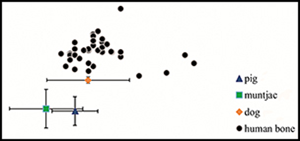Article contents
Subsistence and health in Middle Neolithic (9000–7000 BP) southern China: new evidence from the Dingsishan site
Published online by Cambridge University Press: 13 November 2020
Abstract

Early Holocene populations in southern China and Southeast Asia are generally considered to have continued practising hunting and gathering, while millet and rice cultivation developed to the north and east. Dingsishan, the oldest Holocene open-air site in South-east Asia, however, had yet to provide direct evidence for human health and subsistence strategies. The authors present isotopic and demographic analyses of Dingsishan individuals from 9000–7000 BP, indicating that the inhabitants relied on freshwater resources, particularly in the third period (c. 7000 BP). Comparison with contemporaneous farming populations also reveals a seemingly higher average life expectancy for the fisher-hunter-gatherers at Dingsishan.
- Type
- Research Article
- Information
- Copyright
- Copyright © The Author(s), 2020. Published by Cambridge University Press on behalf of Antiquity Publications Ltd.
References
- 8
- Cited by


